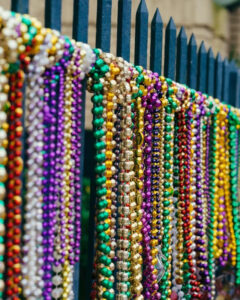
While the vast majority of the American public believe the words “Mardi Gras” are synonymous with “wildest party of the year,” that unfortunately is not the case.
Contrary to popular belief, Mardi Gras did not begin in New Orleans, and its origins trace back to medieval Europe, passing through Rome and Venice and eventually settling in Mobile, Alabama.
According to the official Mardi Gras New Orleans website, the first U.S. Mardi Gras celebration occurred in Mobile in 1703 via a secret society, the Masque de Mobile. This society was formed to organize the celebrations. This society is similar to the “krewes” in New Orleans which sponsor the elaborate floats used in the parades before and during Mardi Gras. The celebration moved to New Orleans after its founding in 1718.
Mardi Gras is French for “Fat Tuesday,”which is the Christian tradition where those observing Lent first participate in a period of indulgence in rich and fat foods.
To prepare for Lent, Christians prepared pancakes to deplete their stock of eggs, milk, butter and fat, giving rise to Pancake Day in England. As the tradition spread through Europe, it became Mardi Gras in France, where waffles and crepes are prepared as part of a lavish feast, according to CNN.
According to Town and Country Magazine, “Mardi Gras, or Fat Tuesday as it’s also known, is the Christian feasting period before the start of Lent on Ash Wednesday. But in the Big Easy the day of indulgence takes on a whole new meaning as galas, parades, and parties take over the city.”
The staple piece of the celebration itself are the purple, green and gold beads that tourists and parade participants sport the entire weekend and beyond. These beads are more than just something to use to show your friends you went to Mardi Gras. Each color symbolizes something: purple for justice, gold for power and green for faith.
Per the Town and Countrystory, “It is rumored that when Grand Duke Alexis visited in 1872, his welcoming committee handed out purple, green, and gold beads to the partygoers that year, as they were the colors of his home. The trio of shades came to symbolize the festivities and were later given meanings: purple for justice, gold for power, and green for faith.”
What many people may not know is that Mardi Gras and the popular celebration carnival are the same festivity. According to history.com, “Though Mardi Gras technically refers only to Fat Tuesday, the Mardi Gras season actually begins on Epiphany, a Christian holiday celebrated on Jan. 6 that is otherwise known as Three Kings Day or the Twelfth Day of Christmas. In Brazil and many other countries, this period between Epiphany and Fat Tuesday is known as Carnival.”
Mardi Gras began as a holiday rooted in religious practices but has since escalated to a jamboree that begets partying for the sake of partying.